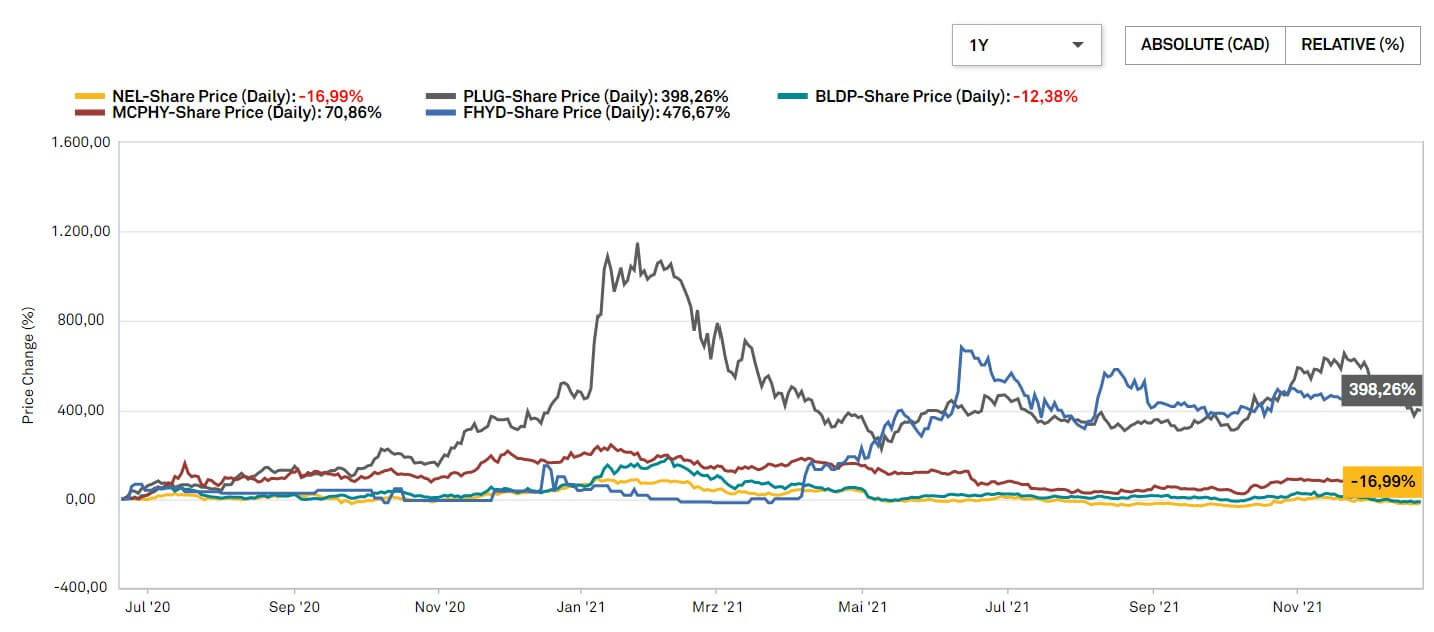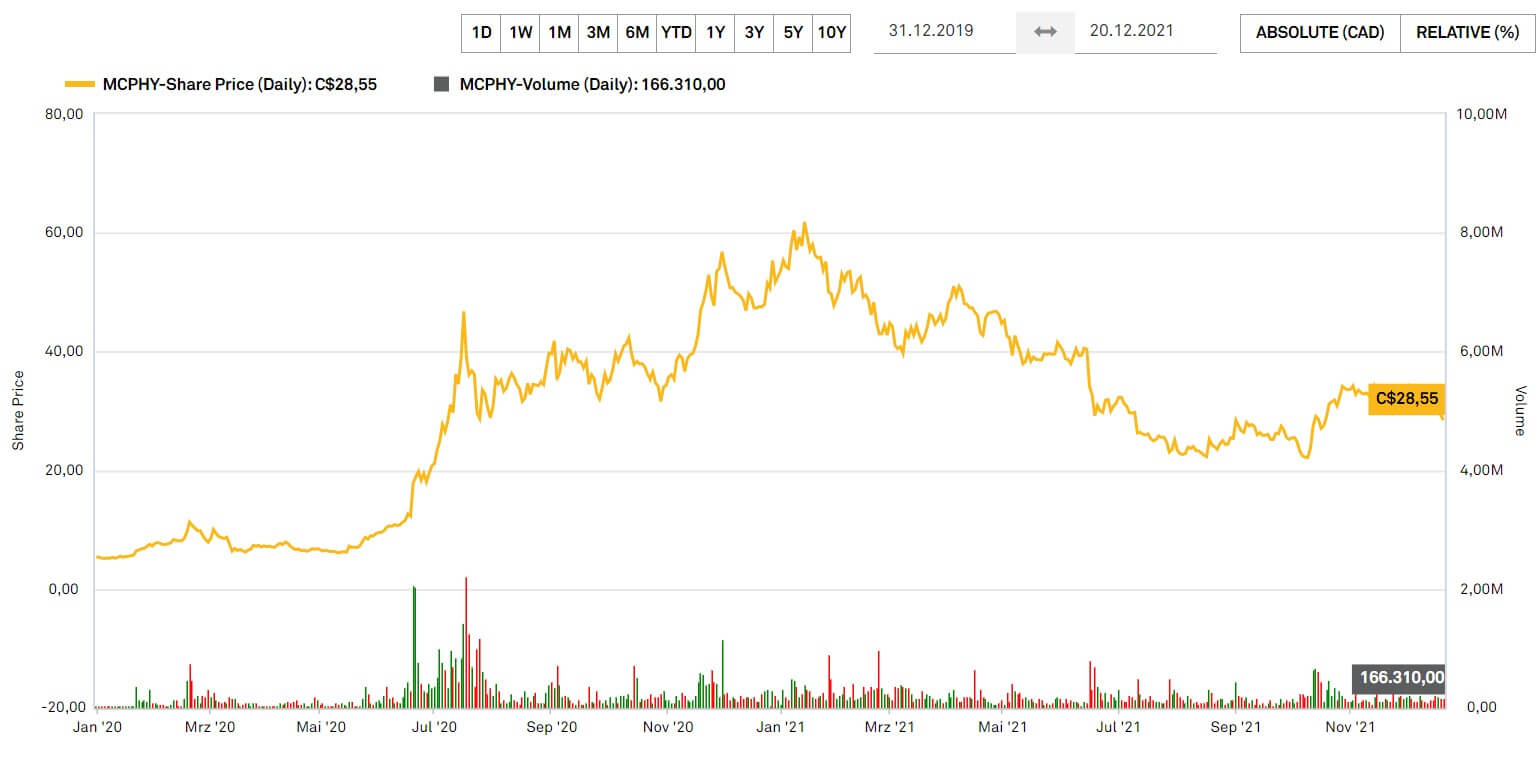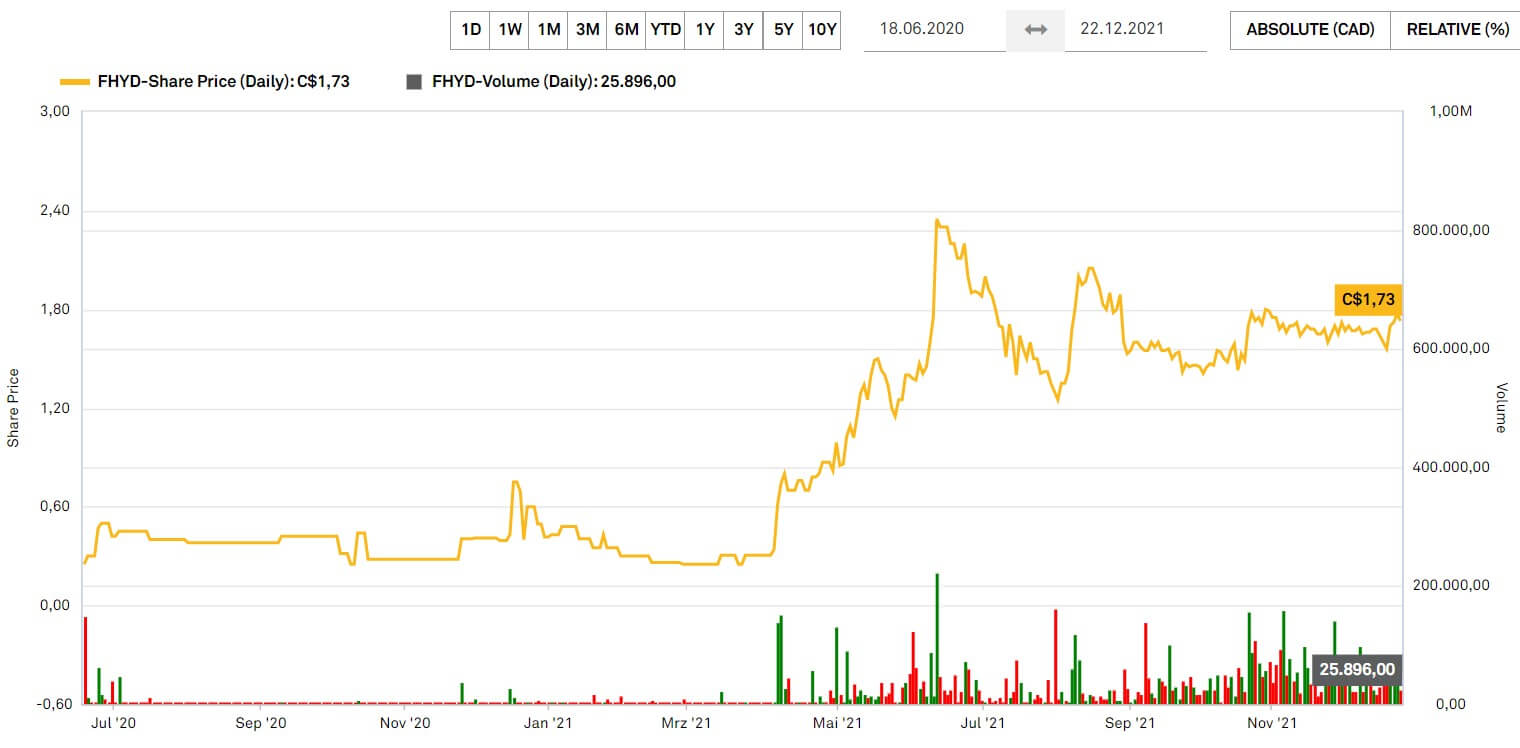
Transformation in the transport sector
Requirements demand change
Climate change is the greatest challenge of our time. The European Green Deal forms the conceptual basis for this change. According to it, the 27 member states of Europe committed themselves to becoming the first climate-neutral continent by 2050. The first stage of this is to reduce emissions from cars by at least 55% by 2030, and trucks by 30%, compared with 1990 levels.1 In addition, road transport will come under the emissions trading system from 2026, which will put a burden on the cost of pollution and thus provide an incentive to switch to environmentally friendly fuels and invest in clean technologies. The targets are impossible to achieve with conventional diesel and gasoline engines, so the automotive industry has already decided to switch to alternative powertrains.
Electric car vs. hydrogen fuel cell technology
The die has already been cast for passenger cars, and the automotive industry is gearing its portfolio toward battery-powered vehicles. Volkswagen, for example, plans to have around 70% of all new vehicles in Europe running on pure electricity by 2030. That means that the Wolfsburg-based company will probably produce the last vehicles with combustion engines for the European markets in the period 2033 to 2035.2
In the past year 2020 alone, almost 400,000 electric vehicles were newly registered in Germany, of which 194,163 were pure battery-electric passenger cars (BEV), and 200,469 were plug-in hybrid passenger cars (PHEV). That means that the number of newly registered BEVs has almost tripled compared to the previous year and even quadrupled for PHEVs.3

For the transportation sector, fuel cell technology offers significant advantages over electric vehicles. Hydrogen has a high energy density of 33.33 kWh/kg, which means it has almost as much energy as 3kg of gasoline. In comparison, the lithium-ion battery comes to a maximum of 0.5 to 0.6 kWh/kg.4 As a result, the fuel cell enables higher ranges and shorter refueling times. In addition, the switch to battery-powered heavy-duty vehicles is unprofitable for the operator. An articulated truck with a battery large enough to power a fully loaded truck for around 500km has to sacrifice around a third of its payload to the batteries. Yet the range of a truck is more like two to three times that.
Massive subsidies for hydrogen projects
Hydrogen is regarded as a versatile energy carrier and should play a key role, according to politicians. The National Hydrogen Strategy aims to establish climate-friendly hydrogen, especially from renewable energies, and its downstream products as key elements of the energy transition in order to complete decarbonization processes in specific areas. In the middle of this year, the German government made EUR 8 billion available for 62 selected projects. In Great Britain, too, the importance of clean hydrogen was fixed in the 10-point plan 5 . In Canada, the "December 2020" strategy sets out the vision of clean hydrogen meeting 30% of the country's energy needs by 2050.
grows the global hydrogen fuel cell market p.a. until 2027.
One problem still to be solved is the high price of the gas. Since hydrogen does not occur unbound, it must first be extracted using energy. It is therefore expensive and problematic to produce and transport. Currently, 1kg still costs around EUR 9.50. The solution for a drastic medium-term price reduction lies in the production of green hydrogen. It is produced by electrolysis of water, using only electricity from renewable sources. In conjunction with the expansion of wind and solar power, Bloomberg NEF6 expects that there will be an 85% drop in the profit costs of green hydrogen by 2050. In most modeled markets, this would bring prices below USD 1.00 per kg and significantly outperform traditional energy sources.
The market is on the move
The logistics market is growing. The Internet and the exponentially growing e-commerce market, also accelerated by the Corona pandemic, are increasing the pressure on transportation in terms of last-mile logistics. Here, the goal of the big players such as Amazon, UPS and DHL is, on the one hand, to achieve the emission reduction targets, and on the other hand, this must not conflict with low costs and fast delivery. The expected drop in the price of green hydrogen is likely to significantly accelerate the shift in the light commercial vehicle sector to zero-emission, hydrogen-powered supply solutions. The market for developers and producers of vehicles with fuel cell technology is enormous. There are currently around 29 million vans in the EU and 3.9 million in the UK. The current average age of vans of 10.9 years with an optimal fleet replacement of five years indicates an imminent shift to alternative powertrains. By 2021, spending on zero-emission vans will be worth GBP 16 billion in the UK alone, an increase of around 50% on 2020. In the US, sales have already risen by 16% p.a. over the past five years and by 6% in Canada.7

Manufacturers are retooling
The market for fuel cells is growing dynamically. According to market research firm Allied Market Research, between 2020 and 2027 alone, growth will be 21.4% annually. The market volume is expected to grow to USD 41.2 billion in six years. The emergence of fuel cells as a major energy source is fueled by manufacturers converting their fleets from fossil fuels or electric to hydrogen technology.
has already been covered by Ballard Power's hydrogen fuel cell fleet by 2020.
The parent company of Opel, Peugeot and Citroën, Stellantis, plans to convert a small fleet of 2,000 vehicles from electric to hydrogen over the next two years, each with a WLTP range of 400km. Filling up the three 700-bar tanks for 4.4kg of hydrogen takes about three minutes. A first unit of the Opel Vivaro-e HYDROGEN was recently handed over to washing machine producer Miele.
French supplier Renault is also planning to launch fuel cell vehicles in 2022. Through the newly founded joint venture "Hyvia" with one of the leading fuel specialists, the U.S. company Plug Power, in addition to the prototype of a panel van, two bus versions of the "Masters" are also being worked on.
At the top of the hydrogen rankings is the Korean technology company Hyundai. By 2028, its commercial vehicle portfolio is to be wholly converted to fuel cell systems.
The best of the best
First Hydrogen's strategy delivers time and cost benefits.
Alongside established light commercial vehicle suppliers, First Hydrogen's "utility van" could shake up the market in the next few years. The Canadian company, headquartered in Vancouver, has a decisive advantage in this respect. One is investing in a clean hydrogen mobility system from the ground up, with no typical OEM legacy from fossil fuels or previous EV investments. The company name was recently changed from Pure Extraction Corp. to First Hydrogen Corp. to better reflect the company's business content. With a team of world-renowned executives led by veteran CEO Balraj Mann, the goal is to become the leading developer and manufacturer of zero-emission, long-range hydrogen-powered commercial vehicles in the UK, EU and North America by combining the best technologies.
The best-of strategy - integrating existing technologies and a proven chassis - can deliver both significant cost and time benefits. In addition, the makers of First Hydrogen are manufacturer and technology-neutral, so there is ultimate control and flexibility in using available components from preferred global suppliers. With decentralized assembly and collaboration with smaller factories worldwide, country-specific customization, such as a "British Van", "European Van" or "Canadian Van" is easily accomplished.
Pioneering partnerships
By cooperating with two global market leaders, the production target expressed by CEO Balraj Mann of delivering between 10,000 and 20,000 units of the First Hydrogen Utility Van per year starting in 2025/2026 is getting closer. The collaboration between First Hydrogen Corp's wholly-owned subsidiary, First Hydrogen Limited UK, and Ballard Power and AVL Powertrain UK was already sealed in the second quarter of this year.
In doing so, First Hydrogen relies on the know-how and experience of its partners. Ballard Power, one of the world's leading providers of innovative clean energy with a hydrogen fuel cell fleet that has traveled more than 50 million km worldwide, has been tapped to develop the technology.
A definitive agreement was reached for the design with AVL Powertrain Limited, the world's largest independent automotive development, simulation and testing company.
units from the Utility Van are to be delivered p.a. from 2025 according to management
Ballard Power and AVL on board
Under agreements with AVL and Ballard, First Hydrogen has begun developing and constructing two hydrogen-powered light-duty vehicles for demonstration purposes at AVL's facilities in the United Kingdom. Over the next six months, strategic partnerships for the vehicle concept, architecture and production will be evaluated through close collaboration with AVL. In the process, prototype delivery is scheduled for the third quarter of 2022. After that, the company plans to move to full commercialization, according to management. Discussions with potential customers have already been held but cannot yet be named in the current status.
The vans, which the MAN eTGE will serve as a so-called "donor vehicle," are equipped with the latest generation Ballard FCgen LCS fuel cell, which gives the vehicles a range of over 500km.
With these vehicles, First Hydrogen is able to demonstrate to potential customers the functional parameters of a zero-emission hydrogen transporter - such as combined range and payload, towing capability, and refueling speed - as well as detailed customer requirements and secure bespoke design orders for the UK, European and North American markets. Proven figures are not yet available on a current basis. However, if the company management's planned deliveries of "only" 10,000 units for 2025 at a unit price of USD 50,000 are taken as a basis, sales would be in the region of USD 500 million. With a current stock market value of around EUR 73.10 million (taking into account all fully diluted shares), there would be a serious discrepancy in the valuation in the event of successful development.
First mover in extraction systems
In addition to building the utility van, First Hydrogen can boast other assets that are currently unique on the market. For example, the Canadians plan to offer fuel cell-powered zero-emission and fully mobile supercritical CO2 extraction systems. It allows users to deploy the systems in remote locations where there are no power grids or the power supply is unstable. This extraction system, which has already been developed, is fully operational and can be remotely monitored and supported by the company's own integrated software operating system.
McPhy Energy as a role model
First Hydrogen attacks the hydrogen refueling station market
The example of the French company McPhy Energy, which focuses on facilities for the production and distribution of hydrogen, shows how quickly a potential undervaluation can be made up in the market. The market capitalization of McPhy amounts to EUR 585.87 million; sales for the full year 2021 are estimated at EUR 13.7 million with a negative EBITDA of EUR 12.60 million. Currently, 37 reference plants with a total capacity of 60 MW are installed or under development. In addition to the market leadership, the planned growth justifies the high valuation. Thus, revenues are expected to grow to EUR 25.5 million in 2022 and even to EUR 48.41 million in 2023.8

The need for hydrogen refueling stations is enormous. With only 83 facilities, Germany led Europe by a wide margin in 2020, according to the automotive association ACEA. First Hydrogen aims to capture this market and announced an agreement with FEV Consulting GmbH, headquartered in Aachen, Germany. The two companies will jointly design and build the prototype for a customized hydrogen fueling station for the hydrogen mobility market. Canadians see the development of the hydrogen fueling station as an asset to their automotive strategy and an additional opportunity to sell hydrogen-related technology to their customer base, accelerating the adoption of hydrogen as the primary fuel for the light to heavy hydrogen mobility sector.
SWOT Analysis
Strengths
- Collaboration with globally recognized market leaders AVL and Ballard Power.
- Manufacturer and technology-neutral business model offers high flexibility in component and supplier selection
- New hydrogen mobility system (utility van) with no legacy OEMs
- Decentralized assembly by small factories worldwide, thus flexible for country-specific adaptations of the vehicle
Weaknesses
- Strong competition from existing automakers
- Low capitalization
- Growing competition in the field of hydrogen refueling stations
Opportunities
- Strong promotion of the hydrogen economy by politicians
- Booming digital economy and growing logistics market with the goal of reducing emissions
- Rapid and favorable market entry due to "best-of-technology"
Threats
- Delay in prototype construction
- Rising production costs put pressure on margins
- Alternative energy supply displaces hydrogen
The "best-of strategy" with potential
The transport sector is in a state of flux due to the climate targets set by politicians. While battery-powered electric vehicles are preferred for passenger cars, fuel cell technology with hydrogen is likely to become the fuel of the future for commercial vehicles thanks to advantages such as shorter charging times, lower weight and longer range. There is enormous demand in the light truck sector due to the transformation from fossil fuels to alternative energy sources. In Europe alone, 29 million vans on the road need to be replaced or converted to fuel cell technology. In addition to the established players, First Hydrogen is entering the market as a newcomer. It has enormous advantages in terms of flexibility and costs due to its "best-of strategy". Should the 10,000 units targeted by management for 2025 be reached, the company should quickly move to a higher valuation level. In addition, First Hydrogen has enormous potential with the development of hydrogen refueling stations. Proven figures and a business plan for the next few years are still outstanding. Thus, with regard to further development, there is not only enormous growth opportunities, but also a recognizable risk.


